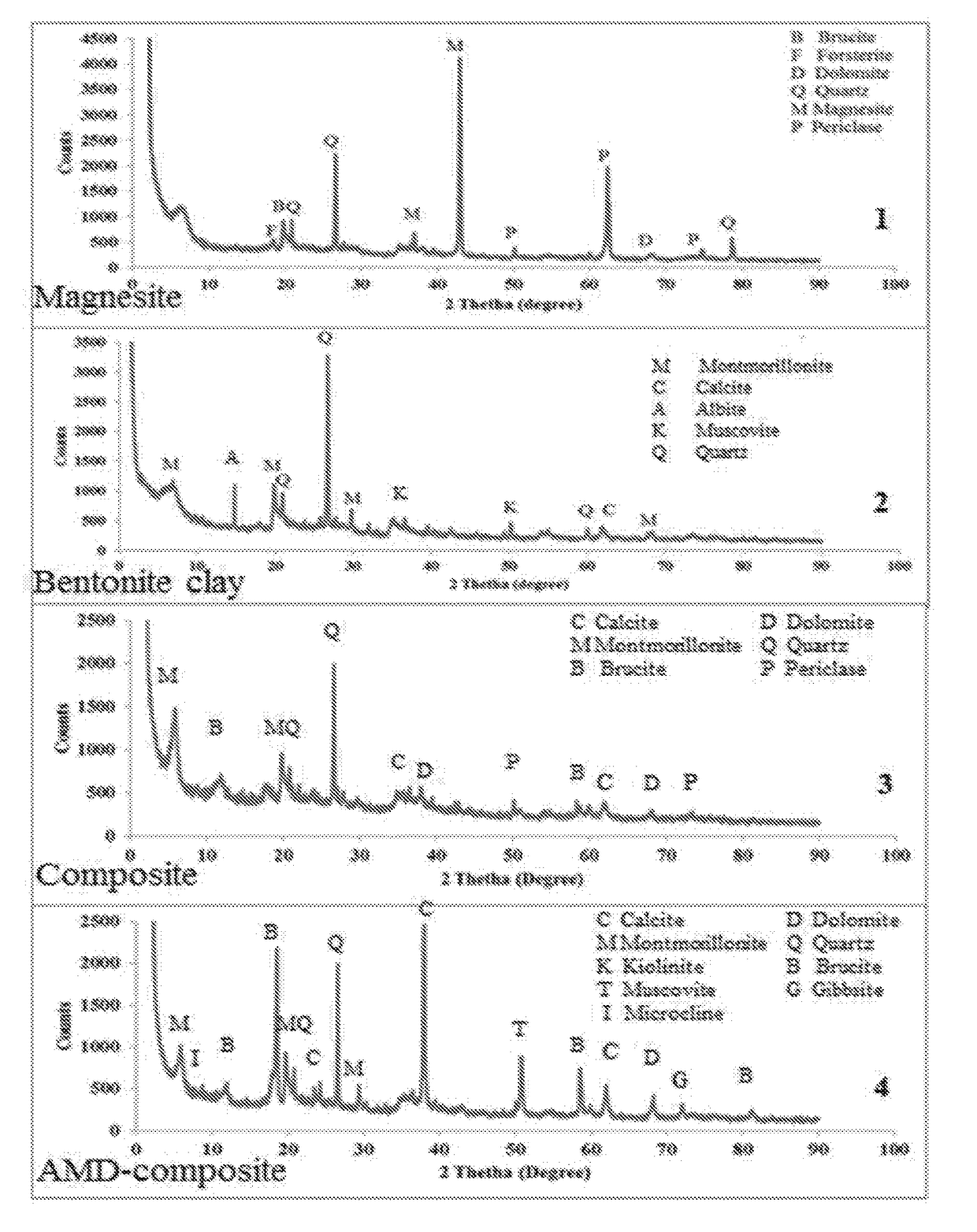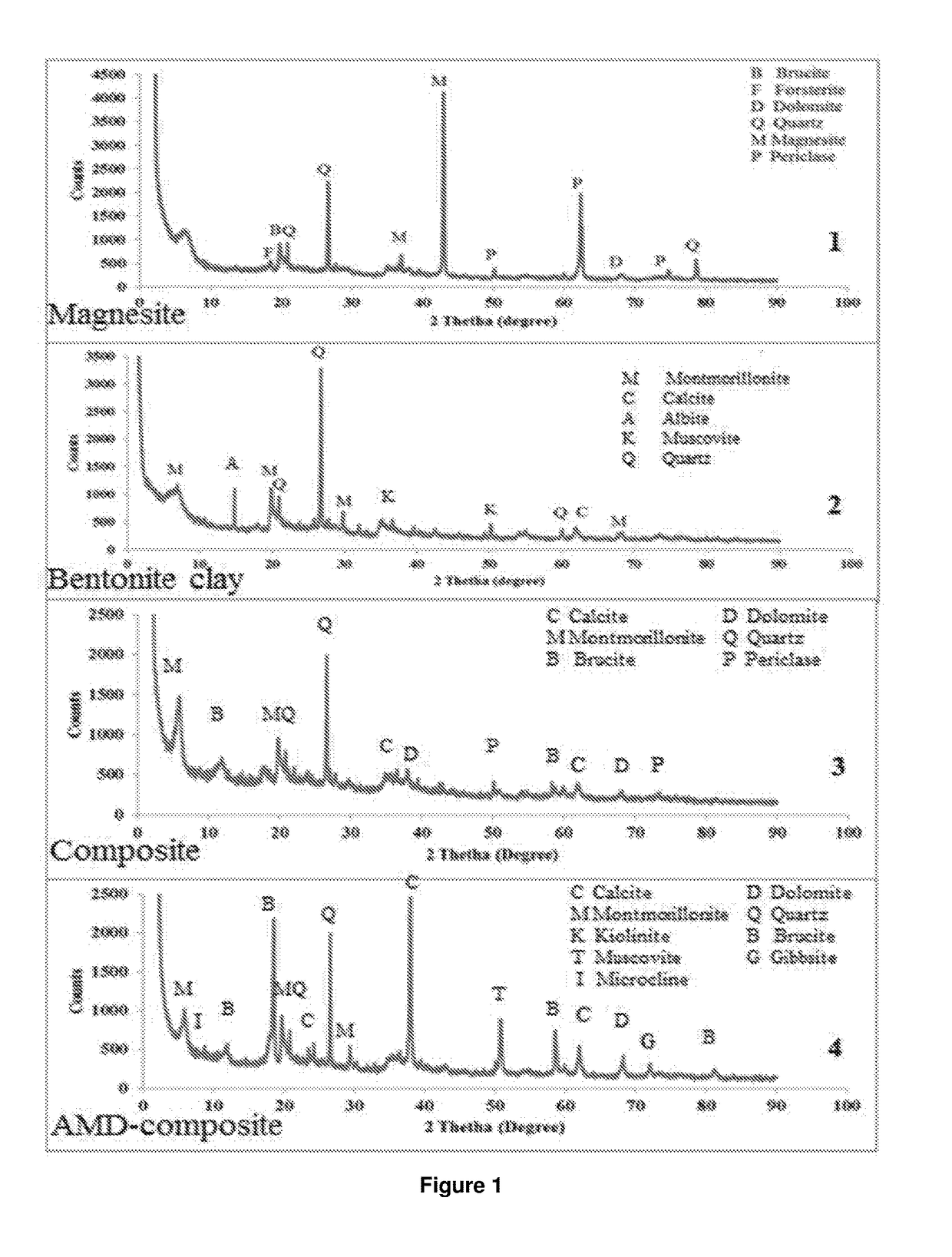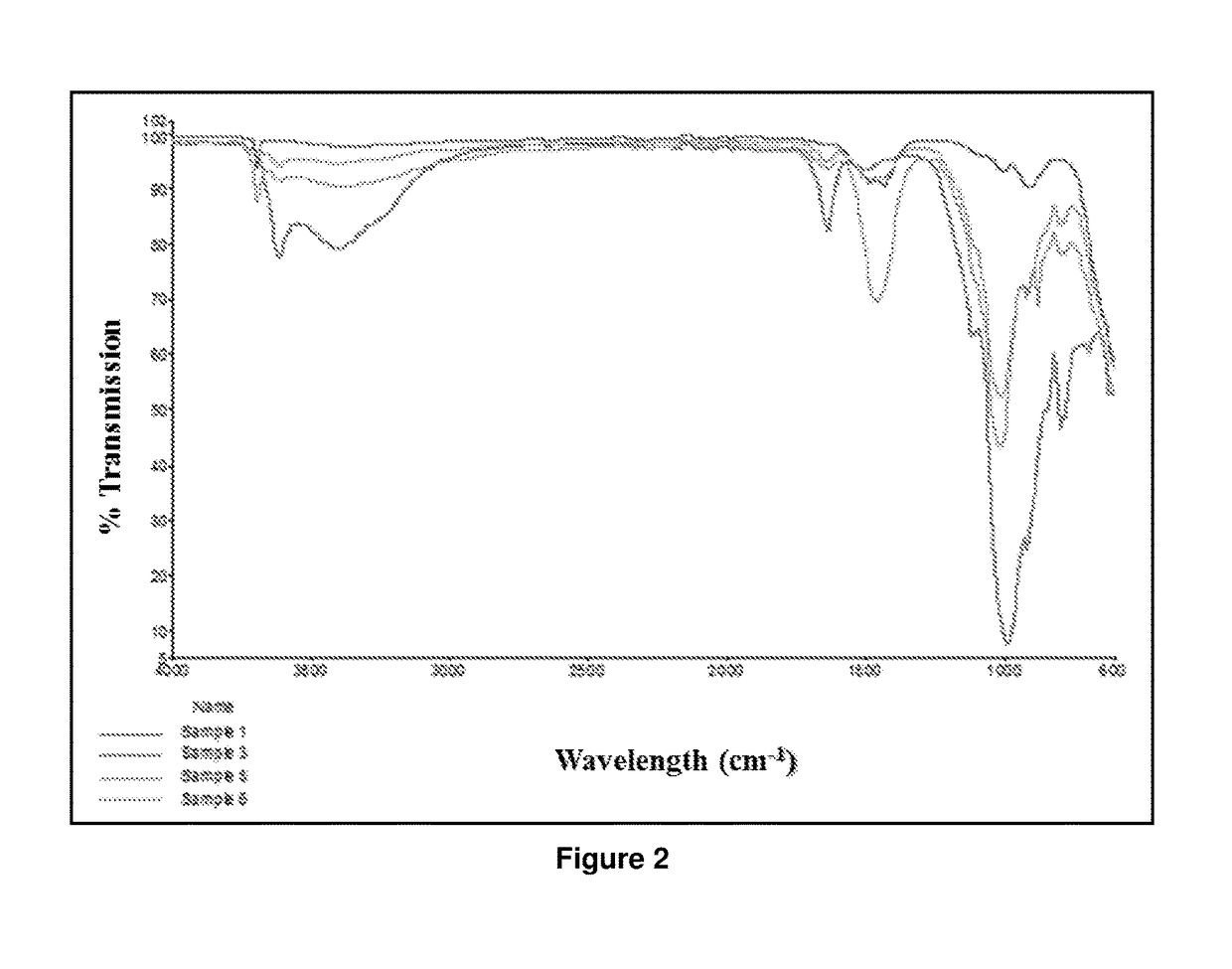Water treatment using a cryptocrystalline magnesite - bentonite clay composite
a technology of cryptocrystalline magnesitebentonite and bentonite clay, applied in the field of water treatment, can solve the problems of compromising the integrity of the ecosystem, reducing biodiversity, and reducing the authentic value of pristine ecosystems
- Summary
- Abstract
- Description
- Claims
- Application Information
AI Technical Summary
Benefits of technology
Problems solved by technology
Method used
Image
Examples
examples
[0076]1. Materials and Methods
[0077]1.1 Sampling
[0078]Raw magnesite rocks from the Folovhodwe Magnesite Mine in Limpopo Province, South Africa, were collected without any prior processing. Bentonite clay was supplied by ECCA (Pty) Ltd (Cape Town, South Africa). Raw AMD samples were collected from a disused mine shaft near Krugersdorp, Gauteng Province, South Africa.
[0079]1.2 Preparation of Cryptocrystalline Magnesite and Bentonite Clay
[0080]Magnesite rock samples were milled to a fine powder (Retsch RS 200 mill) and sieved (32 μm particle sizes). The raw bentonite was washed by soaking in ultra-pure water and draining after 10 minutes. The ultrapure water used was such that it covered the entire sample in the beaker and was allowed to overflow. The procedure was repeated four times. The washed bentonite was dried (24 h at 105° C.). The dried samples were milled into a fine powder (Retsch RS 200 mill) and sieved (32 μm particle size sieves).
[0081]1.3 Composite Preparation
[0082]Mechan...
PUM
| Property | Measurement | Unit |
|---|---|---|
| particle size | aaaaa | aaaaa |
| concentration | aaaaa | aaaaa |
| particle size | aaaaa | aaaaa |
Abstract
Description
Claims
Application Information
 Login to View More
Login to View More - R&D
- Intellectual Property
- Life Sciences
- Materials
- Tech Scout
- Unparalleled Data Quality
- Higher Quality Content
- 60% Fewer Hallucinations
Browse by: Latest US Patents, China's latest patents, Technical Efficacy Thesaurus, Application Domain, Technology Topic, Popular Technical Reports.
© 2025 PatSnap. All rights reserved.Legal|Privacy policy|Modern Slavery Act Transparency Statement|Sitemap|About US| Contact US: help@patsnap.com



